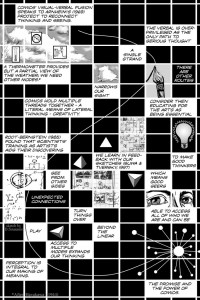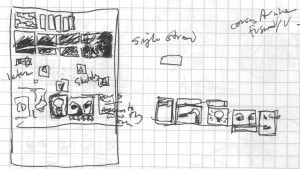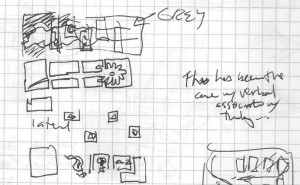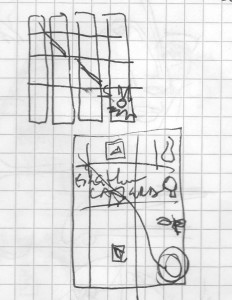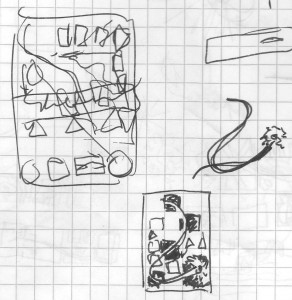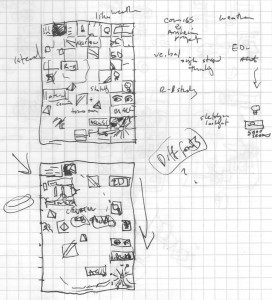Out of the blue Monday evening, I received an email from Chris Malmberg, a professor at the University of Alaska Fairbanks, sharing a podcast he had done with his colleague Brooke Sheridan titled “Why can’t my dissertation have pictures too?” on the use of comics in education and was in large part a discussion around my dissertation and the implications for what academic inquiry can look like.
A sidenote: near the end of the podcast, Brooke goes into some detail explaining a page from my piece the Shape of Our Thoughts. The page is intentionally able to be read non-linearly and emphasizes the way creating a comic, in that spatial play of visual and verbal, can facilitate creative discoveries. I cite, and Brooke mentions, a study by Robert Root-Bernstein in which he found that scientists’ training as artists helped in their process of discovering. The broader implications of this study are central to my dissertation and using comics – having access to alternative means of seeing allowed those individuals to look at problems and make connections in ways their more narrowly educated peers limited to a single mode of thinking could not. Anyhow, the page is below as are some of the sketches that led to its development.
Thanks Chris and Brooke, hope you all enjoy their conversation. – Nick



